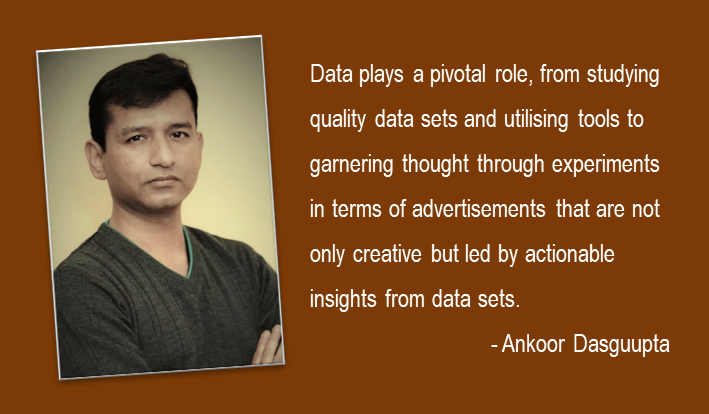I am certain that going forward, the past two years will be probably a part of history books and ofcourse Public Relations, advertising & media books as well. Apart from the pain, suffering, learning, there has been a tectonic shift in the consumer behavior. What I strongly feel about is, it is that time where storytelling needs to be a mission to inspire, bring in community values and the purpose of not only selling a product. It starts with differentiation at the product level and marketing will need to be approached as first ‘building a connect’ with a higher common purpose of the target audience. And, ofcourse, that is an uphill task. Uphill because according to me, the sunrise for the post-pandemic era will bring in another shift in behavior, though the difference expected is that it will stem from the experiences of the people during the pandemic phase. We see people becoming more adaptive to such a situation.
Sharing my three inter-connected core observations, with respect to the changing consumption of content and audience behaviour.
Experiencing the Story
Stanford’s Graduate School of Business found that when people listened to pitches, either containing facts and figures or a story, only 5% recalled a statistic, but a whopping 63% remembered the stories. Talking more than a decade back, I used to observe the difference between the kirana store hawkers and the hawkers at Palika Bazar. The moment we entered Palika, the hawkers were on to us, hard selling like I have rarely witnessed. Whereas, the kirana owner used to not hard sell. Well, may be both approaches worked that point of time, however, I used to wonder what is the kirana doing differently. They simply had built a pool of loyal customers with their product quality, their art of having conversations and the trust of “chutta nahin hain to baad mein de dena“(This is pre Digital payment era). Whereas, the usual perception of Palika was buying cheap stuff that had temporary life. Though Palika Bazar was more of an experience as a day out for shopping, then having Milk Shake from Keventers, grabbing a bite from Wenger’s.
If we take a look, there are stories all around us, poignant, happy and comic in nature. However, how many of them keep nudging us for years? To me, it is time that the story should have that much depth that is required for the audience to experience the story and not just look at the audio visual part of it. Take a quick test. If I ask you to name just five of your favorite advertisements in 30 seconds, which ones come to your mind? We as the audience, are human beings first and we all resonate with something that ‘invites’ us to experience a narrative in some way. People will buy, if they find the element of authenticity and trust in what is being sold to them, then be it coffee, a face cream, a car or a floor cleaner. The audience needs to be a part of that story, so as to connect with the product.
One of the stories that keeps coming back to me was my spending one full day at the Disneyland. That time it was just my wife and me visiting and I realised that I feel is not only for children. The parents or people who are yet to become parents, will equally become of part of that story for a lifetime. That is because from the moment one enters Disneyland, nothing can stop you from becoming a child again. I recall myself taking pictures with Mickey, Goofy, and hogging on waffles with mickey mouse shaped cream on top. Disney is one my favorite story creators and tellers.
Data Science
Data plays a pivotal role, from studying quality data sets and utilising tools to garnering thought through experiments in terms of advertisements that are not only creative but led by actionable insights from data sets. It is nothing but elements from mathematics, statistics and computer science that data science are specialists work with, across departments to derive valuable information and further contribute to systematic decision-making. Data scientists can also use big data methodologies to develop predictive fraud propensity models that help in mitigating risks and frauds. That will add meaning to the narrative being in front of the consumer as something that inspires and engages in some way, rather than just being, be it static or a video. We may be observing a lot of behaviour, however, supported with data, decisions from a marketing standpoint become more actionable.
Our daily grind
Although nothing new, however, people today seem to understand the depth of ‘uncertainty’ far more that we used to. We understand that it is the moment that we are living in while being also prepared for the worst. I did some primary research in conversation with around 40 people in the age group 30 to 45 and that one thing that stood out in common is that people have reduced impulse purchase and tend to pay deeper attention to essential purchase. That is because people would want to save as much possible during such trying times. One of the parents mentioned that they discovered during the pandemic, during the time their child watches cartoons on YouTube via connected TV, they get all kinds of advertisements that are completely irrelevant for the child. I understand that the YouTube account may be made by the parent and hence the targeting, however, their question was ‘Why can’t YouTube see the user behaviour of cartoons, nursery rhymes being played for over a time period, where 3 hours on average is the daily watch time, and not target with irrelevant advertisements for the child during those 3 to 4 hours? “I do not have an answer yet. However, I recognize that the ecosystem, specifically the role of technology will need to try as much to make it a better daily experience, something that brings in better experiences to the daily grind. This is also considering a lot has moved towards work from home and we all have our set of learning experiences.
The views and opinions published here belong to the author and do not necessarily reflect the views and opinions of the publisher.



Be the first to comment on "The experience, data science & our daily grind"